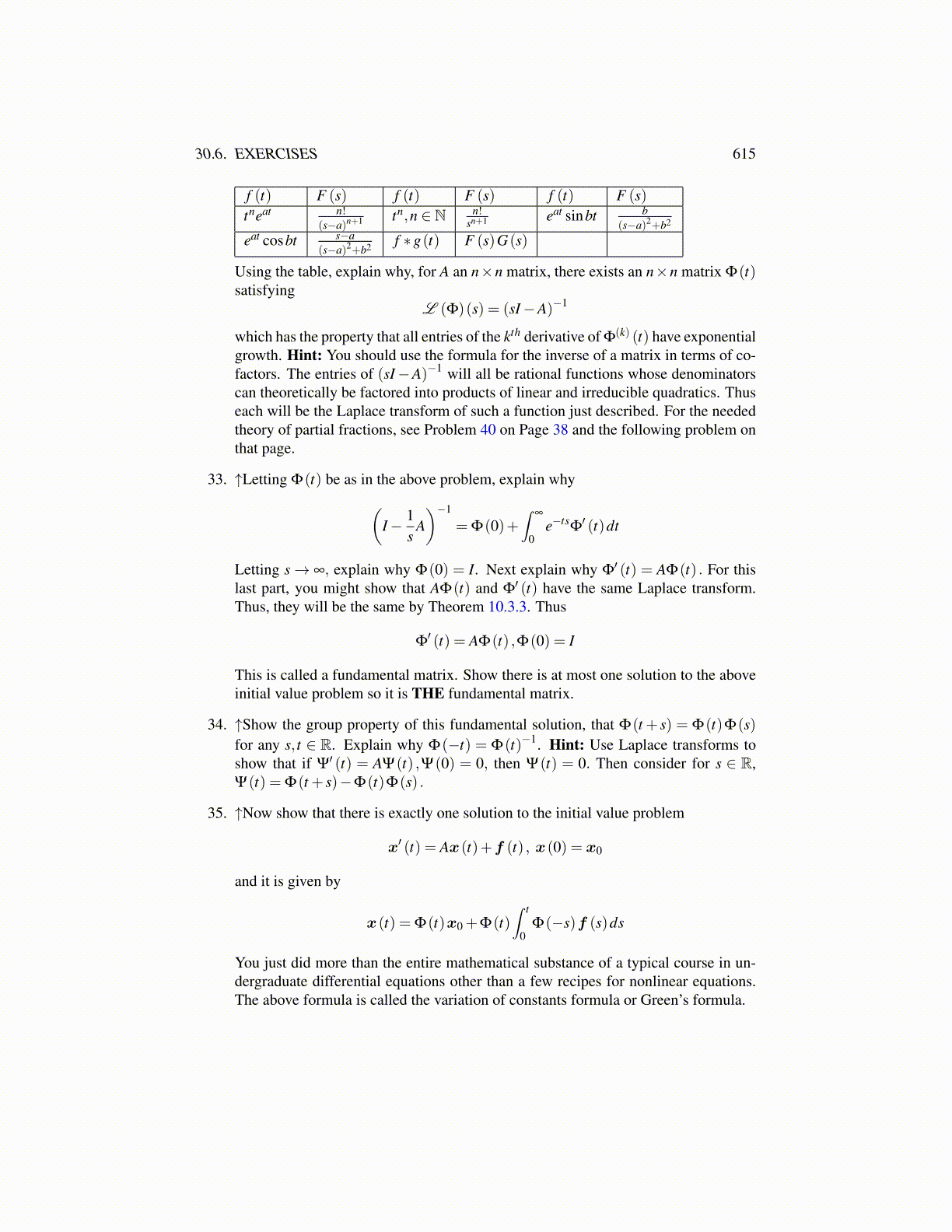
31.1. BASIS VECTORS 615
Conversely, suppose A has nonzero determinant. Why are the ek a basis? Supposexkek = 0. Is each xk = 0? Then xka j
ki j = 0 and so for each j, a jkxk = 0 and since A has
nonzero determinant, xk = 0.Summarizing what has been shown so far, we know that {ei}p
i=1 is a basis for Rp if andonly if when ei = a j
i i j,
det(
a ji
)̸= 0. (31.5)
If {ei}pi=1 is a basis, then there exists a unique dual basis,
{e j}p
j=1 satisfying
e j ·ei = δji , (31.6)
and that if v is any vector,v = v je
j, v = v je j. (31.7)
The components of v which have the index on the top are called the contravariant compo-nents of the vector while the components which have the index on the bottom are called thecovariant components. In general vi ̸= v j! We also have formulae for these components interms of the dot product.
v j = v ·e j, v j = v ·e j. (31.8)
As indicated above, define gi j ≡ ei ·e j and gi j ≡ ei ·e j. The next theorem describes theprocess of raising or lowering an index.
Theorem 31.1.6 The following hold.
gi je j = ei, gi jej = ei, (31.9)
gi jv j = vi, gi jv j = vi, (31.10)
gi jg jk = δik, (31.11)
det(gi j)> 0, det(gi j)> 0. (31.12)
Proof: First,ei = ei ·e je j = gi je j
by 31.7 and 31.8. Similarly, by 31.7 and 31.8,
ei = ei ·e jej = gi je
j.
This verifies 31.9. To verify 31.10,
vi = ei ·v = gi je j ·v = gi jv j.
The proof of the remaining formula in 31.10 is similar.To verify 31.11,
gi jg jk = ei ·e je j ·ek =((ei ·e j)e j
)·ek = ei ·ek = δ
ik.
This shows the two determinants in 31.12 are non zero because the two matrices are in-verses of each other. It only remains to verify that one of these is greater than zero. Lettingei = a j
i i j = biji
j, we see that since i j = i j,a ji = bi
j. Therefore,
ei ·e j = ari ir ·b j
kik = ar
i bjkδ
kr = ak
i b jk = ak
i akj.